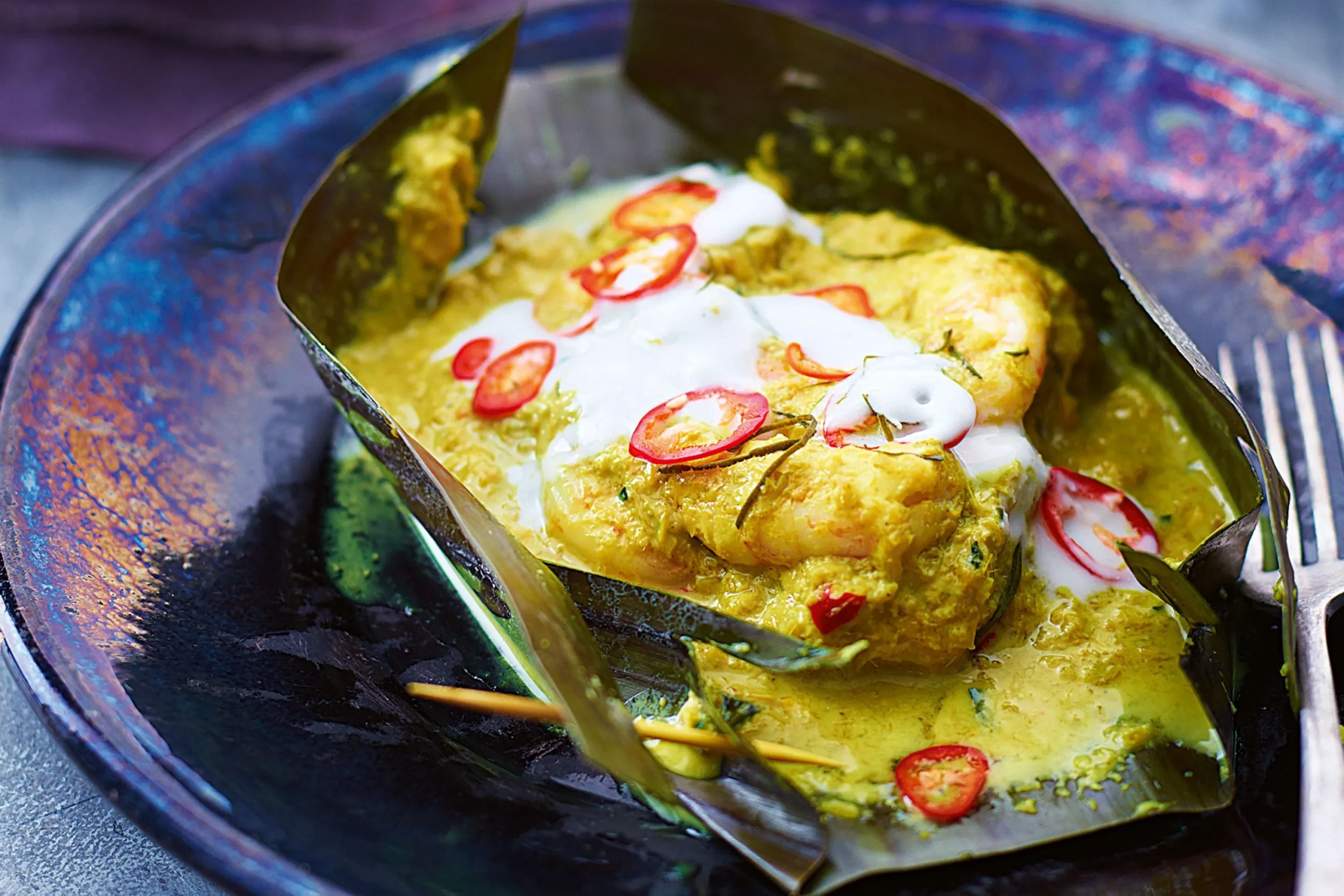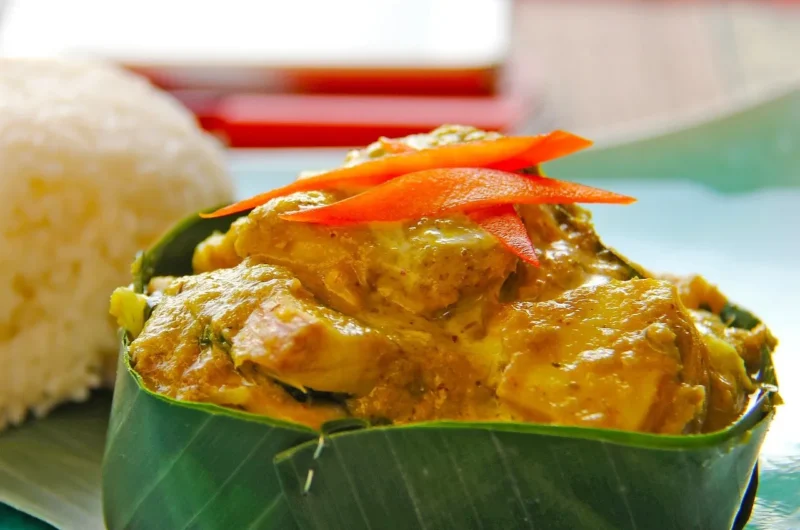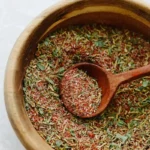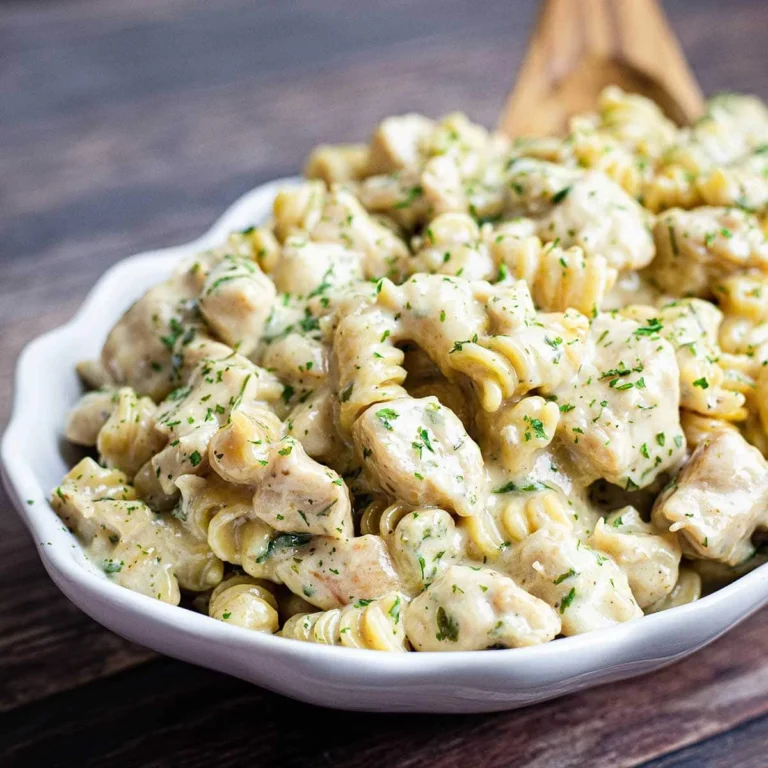Amok recipe chicken
Amok, a traditional Cambodian dish, is a tantalizing culinary experience that offers a burst of flavors and textures. This beloved Cambodian recipe is a delightful fusion of fragrant spices, tender chicken, and a luscious coconut base. In this article, we will delve into the world of Amok chicken, exploring its rich history, the art of preparation, and its cultural significance.
Contents
History and Origins
Amok, pronounced as “ah-mohk,” has deep-rooted historical significance in Cambodia. This dish has been a part of Cambodian cuisine for centuries, showcasing the country’s cultural diversity and culinary prowess. The term “Amok” itself means “to mix” in Khmer, the official language of Cambodia. This name is a reflection of the dish’s preparation method, which involves mixing various ingredients to create a harmonious blend of flavors.
The origins of Amok can be traced back to the Khmer Empire, which thrived in Southeast Asia from the 9th to the 15th century. It was during this period that the foundations of Cambodian cuisine, including Amok, were established. The dish was often reserved for special occasions and royal banquets, symbolizing the rich heritage and culinary expertise of the Khmer people.
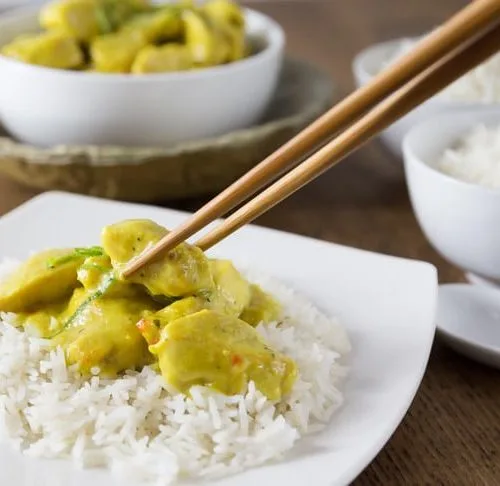
The Art of Preparation
Amok chicken is not just a dish; it’s a work of art in the world of gastronomy. The preparation process involves a meticulous blend of ingredients, techniques, and patience. Central to the dish is the use of a banana leaf, which acts as both a cooking vessel and a serving platter. This traditional touch not only imparts a unique flavor but also pays homage to Cambodia’s natural resources.
To create Amok chicken, the meat is first marinated in a flavorful mixture of herbs, spices, and coconut milk. The marinated chicken is then carefully wrapped in a banana leaf, creating a pocket that encapsulates the essence of the dish. The parcels are then steamed or baked to perfection, allowing the flavors to meld together and infuse the chicken with an irresistible aroma.
Cultural Significance
Amok chicken is more than just a culinary delight; it is a symbol of Cambodia’s cultural heritage. It represents the country’s commitment to preserving its traditions and passing them down through generations. In Cambodia, cooking Amok is a family affair, with recipes and techniques being handed down from grandparents to parents and, eventually, to their children. This cultural exchange ensures that the art of making Amok remains a living tradition.
The dish is often associated with celebrations and gatherings, where it serves as a symbol of unity and togetherness. Sharing a meal of Amok with loved ones is a cherished tradition that fosters a sense of community and belonging.
amok recipe chicken
4
servings30
40
minutes1200
Ingredients
Chicken (2 boneless, skinless chicken breasts or thighs, cubed)
Amok Paste (3-4 tablespoons, store-bought or homemade)
Coconut Milk (1 can, 14 oz)
Kaffir Lime Leaves (4-5 leaves, thinly sliced)
Fish Sauce (2 tablespoons)
Directions
- Start by cutting the chicken into bite-sized cubes. If you prefer a milder flavor, you can marinate the chicken in a little fish sauce and let it sit for 10-15 minutes before cooking.
- Heat a large skillet or wok over medium heat and add the Amok paste. Stir-fry the paste for a couple of minutes until it becomes fragrant and slightly thickened.
- Toss in the cubed chicken and stir-fry for about 5-7 minutes or until it's no longer pink inside and has a slight golden sear.
- Now, pour in the entire can of coconut milk, stirring it well to combine with the chicken and Amok paste. Allow it to simmer gently for about 10-15 minutes, letting the flavors meld together and the sauce thicken.
- Add the sliced Kaffir lime leaves and fish sauce to the simmering mixture. Stir well, and let it simmer for an additional 2-3 minutes. Taste and adjust the seasoning if necessary. Once the chicken is tender and the sauce has thickened to your liking, it's ready to serve. Traditionally, Amok is served with steamed jasmine rice or rice noodles.
Nutritional Content (per serving):
- Calories: 300-350 kcal
- Protein: 25-30g
- Carbohydrates: 5-10g
- Fat: 20-25g
- Fiber: 1-2g
- Sodium: 800-1000mg
FAQs (Frequently Asked Questions):
1. What is Amok paste, and where can I find it?
– Amok paste is a blend of spices and aromatics used in Cambodian cuisine. You can find it in Asian grocery stores or online. If you can’t find it, you can make your own by blending ingredients like lemongrass, garlic, ginger, and chili peppers.
2. Can I use other meats or tofu instead of chicken?
– Absolutely! You can substitute chicken with shrimp, beef, pork, or even tofu to create different variations of this dish. Adjust the cooking time accordingly based on your choice of protein.
3. Is Amok a spicy dish?
– It can be as spicy as you like. The level of spiciness depends on the Amok paste you use and whether you add additional chili peppers. You can customize the heat to suit your taste.
4. What are Kaffir lime leaves, and can I substitute them?
– Kaffir lime leaves have a unique citrusy aroma. If you can’t find them, you can substitute with lime zest, but the flavor won’t be quite the same. Freeze-dried Kaffir lime leaves are also an option.
5. How can I store leftover Amok chicken?
– To store leftovers, place them in an airtight container and refrigerate for up to 2-3 days. Reheat in a microwave or on the stovetop, adding a little coconut milk to maintain the creamy consistency.
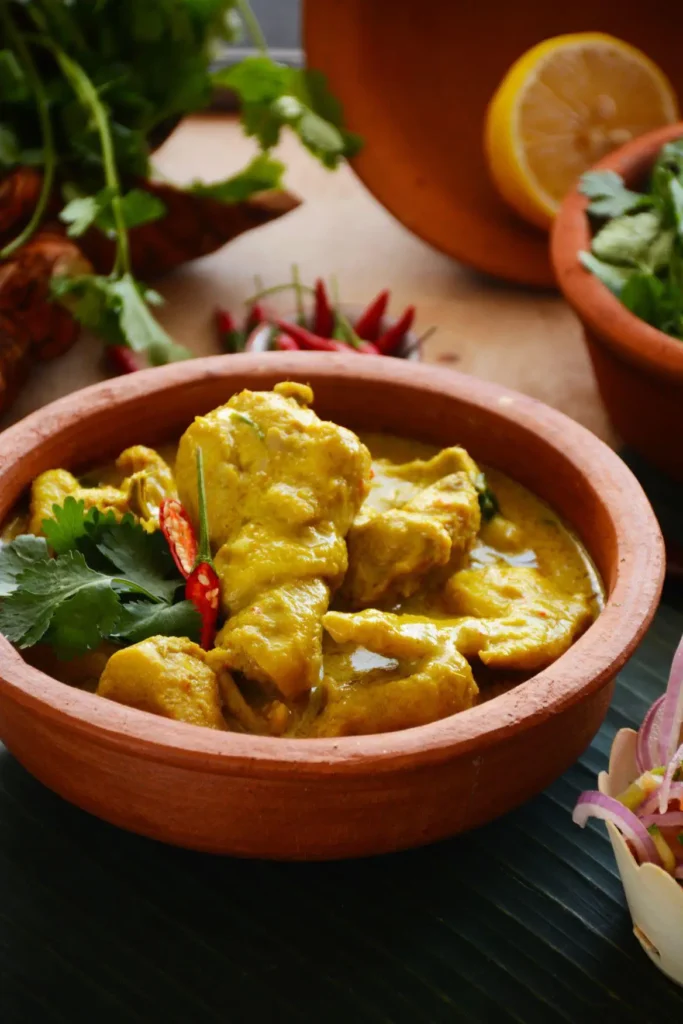
Can I Use the Slap Your Mama Chicken Recipe for Amok Chicken?
Can I use the slap your mama chicken recipe for Amok Chicken? While the slap your mama chicken recipe is incredibly flavorful and delicious, it is specifically designed for a different type of chicken dish. Amok Chicken, a traditional Cambodian recipe, requires its own distinct combination of spices and flavors. It’s best to look for an authentic Amok Chicken recipe to enjoy the true taste of this dish.
Conclusion
Amok chicken is more than just a recipe; it is a testament to the rich history, artistry, and cultural significance of Cambodia. Its roots in the Khmer Empire, the meticulous preparation process, and its role in bringing communities together all contribute to its enduring appeal. Whether enjoyed in a bustling Cambodian market or prepared with love in a home kitchen, Amok chicken is a dish that embodies the soul of Cambodia and invites all who taste it to savor the flavors of this beautiful and resilient nation.
